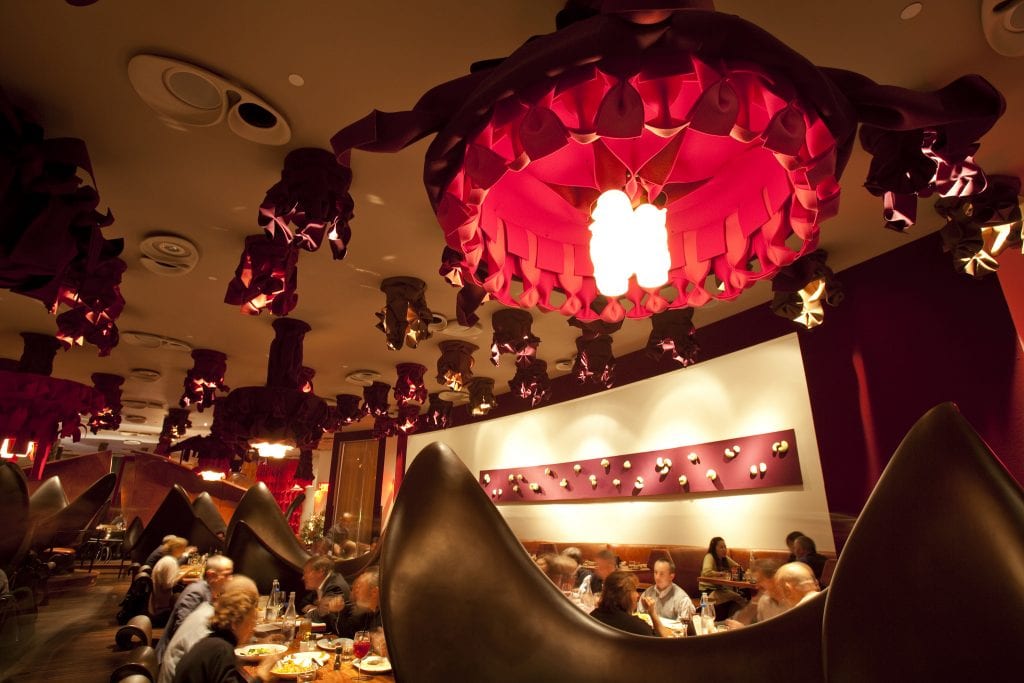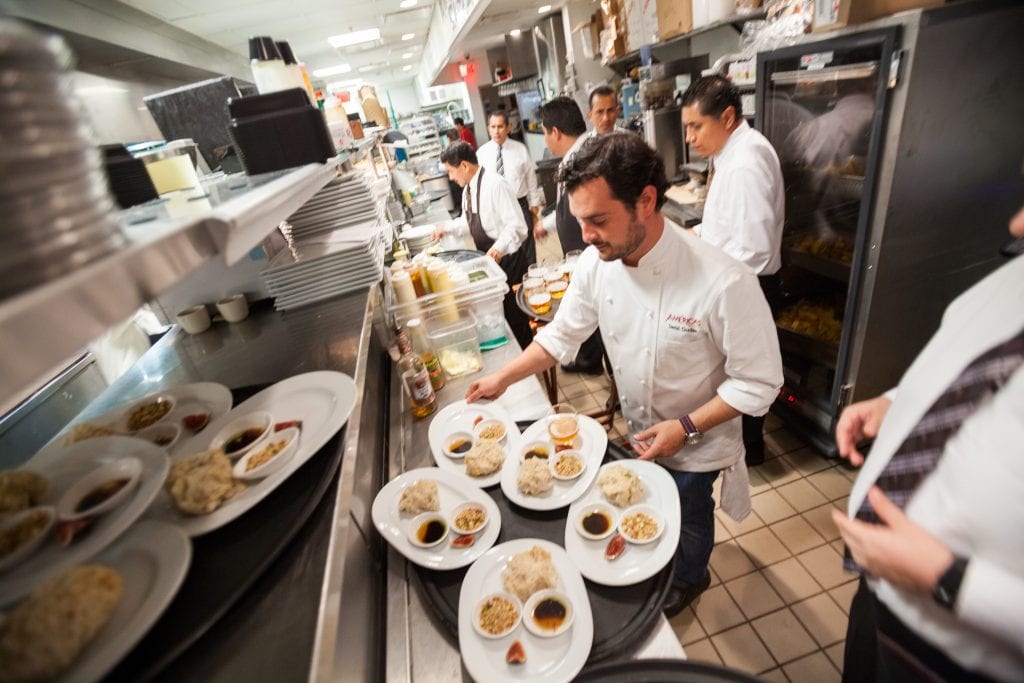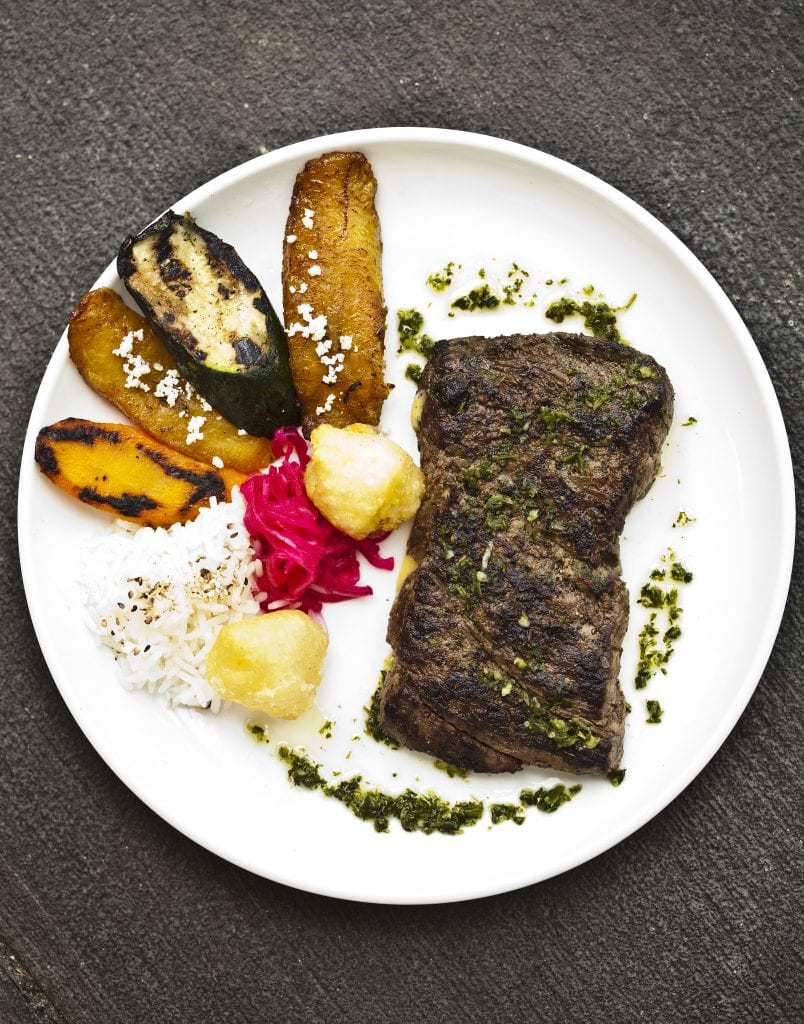A Nicaraguan Chef in the “Hall of Fame”
Michael Cordúa: the art of ennobling Nicaraguan cuisine
By Anagilmara Vilchez (Confidencial)

HAVANA TIMES – Blame it on rock music, on Queen and The Who. In 1976, Michael Cordúa Cruz – today chef and director of a successful restaurant chain in Houston, Texas –wanted a sound system, so he took a job washing pots in a Mexican restaurant to buy himself a Marantz stereo worth almost a thousand dollars. Cordúa was 16 years old, and earned $2.50 an hour. He had recently left Nicaragua for the US, the country where he’s lived from that time on.
Although he never studied gastronomy, Cordúa has been a semi-finalist three times for the James Beard Prize, considered the “Oscar of the kitchen”. The prestigious culinary magazine Food & Wine has included him in their Hall of Fame and in their list of the Top Ten Chefs in the United States.
Michael Cordúa was born in Managua on July 26, 1959, the sixth of seven siblings. For years, ships were his calling. Upon graduating from Texas A & M University in economics with a specialty in finance, he became a shipping and chartering agent. He did this for six years and might have continued doing so, if it hadn’t been for oil and its spectacular drops in price.
Cordúa worked obtaining cargo for the ships and was the only bilingual staff in a small company that eventually closed. “A fascinating life – I didn’t leave it, it left me,” he recalls

With his layoff money, new horizons opened up. “I didn’t see myself as unemployed, but with an opportunity to make a new career,” he relates.
He wanted to get involved in a frozen food business, but the plan failed to gel. He considered moving to Miami to become a lay minister in the Catholic Church, but his wife objected and told him: “no, that’s not what God wants for you.”
That’s when Cordúa asked himself: “What do I want to do?”
Inherited Passion
Eating in the university cafeteria had been fun, at first. However, after a few months devouring nothing but the food they offered there, Michael Cordúa missed his country’s home cooking.
During his vacations in Nicaragua, he asked his mother to teach him a few recipes for Nicaraguan dishes. He began cooking on Sundays for his roommates and a few Nicaraguans who were also living on campus. They would pool their money to buy the ingredients, and he would take care of the magic.
![The “tres leches” [three milk] cakes of Michael Cordúa have won praise from both diners and culinary experts.](https://havanatimes.org/wp-content/uploads/2016/07/26137182440_8e0daaec17_k1-683x1024.jpg)
He finally decided: he would invest in a restaurant. His family backed him. Others told him it was a loony idea.
“’Michael, don’t be crazy, everyone fails in that business,’” they kept saying. “Even the parish priest advised me, ‘Michael, don’t do it.’”
On the 8th day of the eighth month of 1988, Churrascos opened in a rented space where eight businesses had previously failed. It was in a dangerous area of Houston, and the owner of the place, “had nothing left to lose,” Cordúa explains. Churrascos had 130 seats, and Cordúa decorated the space with no reference to a specific country. The idea was to create a gastronomic offer where all Hispanics could feel at home. There was red, white and leather; churrascos [skirt steaks], ceviches,[seafood cocktails], and “three milk” cakes.
“We became Pan Americans,” Cordúa says. He began with three partners and an investment of $100,000. When the other two partners withdrew before the opening, he was left to finance a project whose expenses were twice what he had calculated.
The first months brought losses. “A lot of debt on my credit card, a lot of praying,” he tells us. The situation was unsustainable. In January of 1989, on the verge of closing the restaurant, “we saw the light.”

Good reviews in the local media and low prices conquered the market, and they survived. Esquire magazine named it “America’s Best New Restaurant.” Before the year had ended, they had enough financing for the second one. In that way, they began to expand.
Thirty people worked in the original Churrascos. Now there are more than 600 in the Cordúa restaurant chain of nine establishments: five duplicates of Churrasco, “Americas”, “Amazon Grill” and “Artista.” In addition, there’s a catering company, called “Cordúa catering”, and Cordúa offers his dishes at a space in The Hobby Center for the Performing Arts.
Among his first employees is a Nicaraguan who left his work as a painter to wash dishes. Twenty-eight years later, he’s still with them, now as a cook at the Churrascos in Sugar Land, a city within the Houston metropolitan area.
“Learned it all by Traveling and Reading”
The things that Michael Cordúa wanted to learn weren’t taught in culinary school, where he could study the French or Italian methods but not Central American cooking or anywhere further south of there. In order to find out, he had to bury his nose in books and magazines. “I never went to cooking school and I don’t have a formal background in the culinary arts, but I learned through traveling and reading,” he admits.
Cordúa – in his announcer’s voice – speaks about leadership in service, properly fried food (crispy but succulent) and the culture of excellence. He can make you perceive tastes, smells, colors and textures of food just by describing it.
In tours through Europe he learned about good taste and good service. He took the Latin flavors and refined them with the European disciplines. In that way, he presented North Americans with a type of cooking that was exciting, “but not dangerous”.
His aim, he affirms, has been to look for the “recipe’s original intentions” and to return the “divine quality to the dish.”
The first steaks he sold cost between four and ten dollars. Today a small churrasco costs close to thirty dollars. When he began, he had no experience in restaurant management, nor in including the cost in the price. “But these are hidden blessings,” he believes, since the low prices were what first attracted the customers.

Cordúa works with David, his oldest son, who graduated in finance and then from the famous Parisian cooking school Le Cordon Bleu. Since 2007, David has been the company CEO.
“I’ve never looked on him as my employee, but as my colleague. That’s been the secret of our ability to work together. We share the yoke like two oxen, pulling forward together in the culinary trade,” Cordúa explains.
In Cordúa’s kitchens, he says, the chef is not a dictator. Decisions are made together, taking into account his colleagues, the waiters and the clients. The latter come from all nationalities, from US North Americans and Latinos to Hindus and Vietnamese.
From Nicaragua for Nicaragua
Miguel Cordúa’s original plan was to study economics and return to Nicaragua to work in banking. The Sandinista revolution caused him to seek a new plan.
“I adore Nicaragua,” he says. He’s already thought about opening a restaurant in the country, since the roots of his palate are in Nicaragua. “I still don’t see anyone in Nicaragua doing what we’re doing. The good restaurants are importing European, Mexican, Argentinean, Japanese ideas, but no one is using Nicaraguan cooking as a base and then making it special.”

He’s managed to make plantain slices look elegant, curly and crispy; to construct a “tres leches” that looks like something from a Parisian café. According to “Food & Wine Review,” his cakes are ”light, supremely moist, and topped with billowing swirls of merengue.” His recipes for this dessert and for gallo pinto (Nica style rice and beans) are on the website of this publication specializing in the culinary world.
In 2014, Nicaragua’s Superior Council of Private Enterprise (COSEP) honored him with their Prize for Business Excellence Outside the Country. The key to his success, he believes, has been aligning his passion with his vocation.
A lover of “dulce de leche” caramel syrup with vanilla ice cream, of shellfish, and of food cooked over charcoal, Cordúa has four children: three girls and a boy. He’s been married since 1980 to Lucía Callejas, also Nicaraguan, who he considers the sculptor of his family. They’re allowed to discuss business for five minutes, after which it becomes a forbidden topic.
Although he’s still a fan of rock, the music played in his restaurants is Brazilian jazz. He leaves Queen and the Beatles for listening in the car, while the stereo that he first became a pot-washer in order to buy lasted him for almost seven years.





